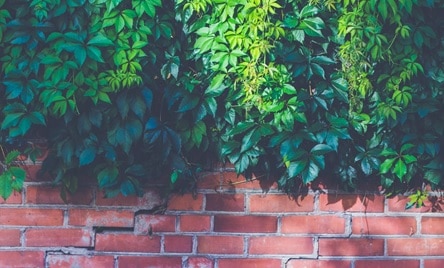 Subsidence is a problem that often worries buyers, and for good reason. It can be difficult to spot, expensive to fix, insure and potentially affect resale value. In this latest post, we look at what subsidence is, how to detect it and how it can affect your insurance.
Subsidence is a problem that often worries buyers, and for good reason. It can be difficult to spot, expensive to fix, insure and potentially affect resale value. In this latest post, we look at what subsidence is, how to detect it and how it can affect your insurance.
What is subsidence?
Subsidence is the downward rotational movement of the ground which can cause structural injury to a building. It can cause houses to sink and put a strain on your home’s structure, causing cracks.
What causes subsidence?
Subsidence in a property can be caused by various factors. Not all homes are at equal risk, it can depend on various geological, seasonal and man-made factors.
- Drought-prone areas are particularly at risk, due to the soil being much more likely to dry out.
- Trees and vegetation roots can disturb the ground and foundations under the home.
- Clay soil can increase the risk of subsidence as the clay shrinks and swells depending on the water content. This makes the ground less stable and potentially causes the foundations to sink.
- Leaking drains and water mains can wash away/soften the soil, causing it to contract under the weight of the home.
- Old homes may have more shallow foundations – however, if they’re built of bricks and lime mortar, they may be more flexible.
How to spot subsidence?
It is not always possible to detect the earlier stages of subsidence, but it is important to regularly check your home. Here are a few key signs of structural movement to look out for:
- Large cracks (larger than 3mm) suddenly appearing in a wall, usually around a door or window frame, which are wider at the top than they are at the bottom.
- Doors and windows sticking.
- If you have an extension, look for cracks where the extension meets the main part of the house.
- Sloping floors (common in older properties).
A RICS residential property survey, carried out by one of our Chartered Surveyors, will identify any subsidence issues and likely causes, and any other property defects.
How to prevent subsidence?
If you think your house is at risk of subsidence, there are various preventative measures you can perform:
- Avoid planting trees too close to your house. If this is already the case, do not dig it up. This can cause waterlogging or instability. Regular pruning can help reduce how much water the trees absorb, but it is best to contact a tree surgeon. The Association of British Insurers (ABI) has a useful table indicating how far away different tree types should be from your property.
- Ensure that all external guttering, pipes and plumbing are well maintained to avoid leaks.
- Catch rainwater in barrels or water butts – this can be used to help water your garden.
If you are buying a property and want to check for signs of subsidence, or other property defects, please do not hesitate to contact e.surv Chartered Surveyors today.
